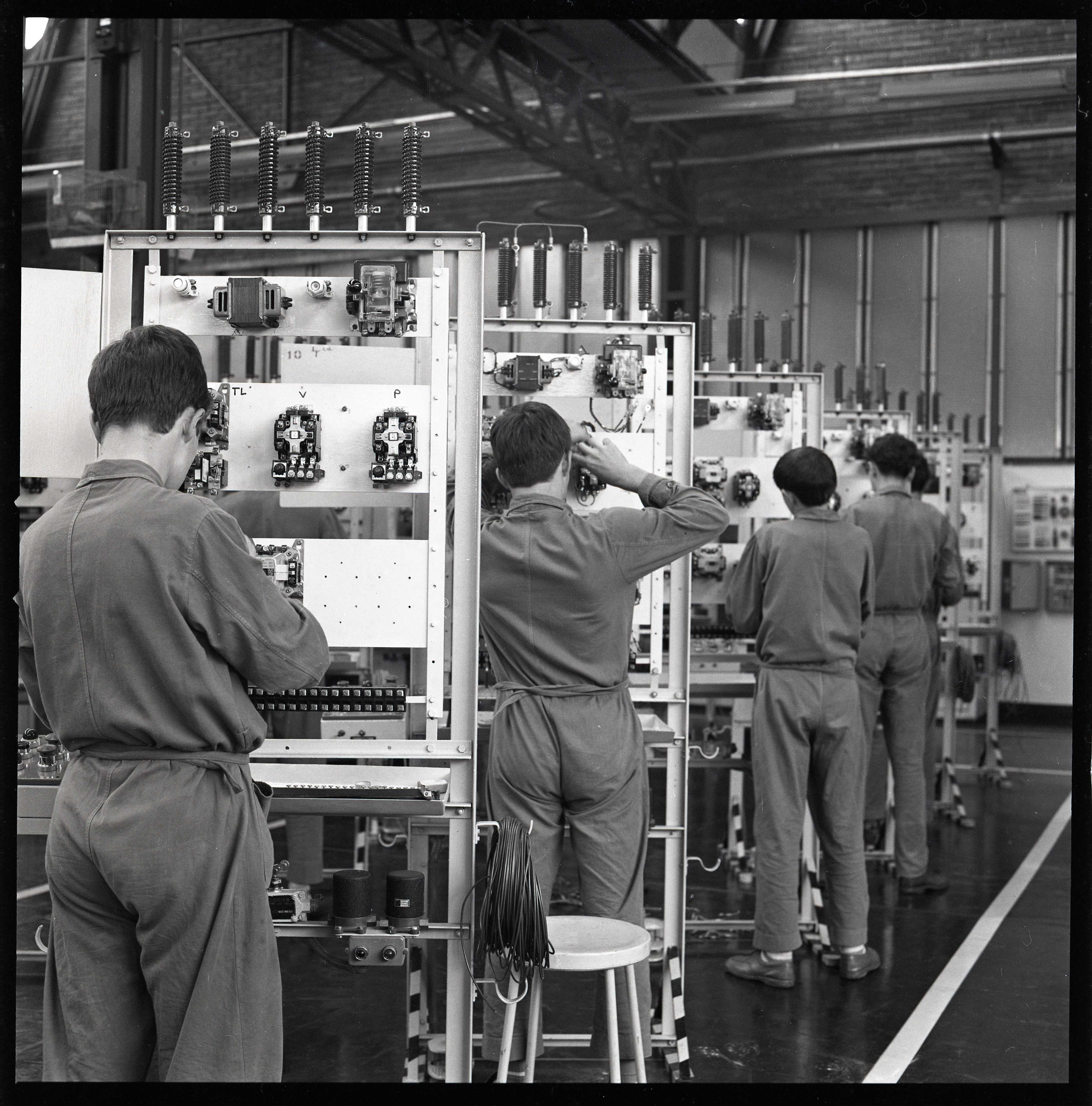Training at the Heart of the Company
The Piero Pirelli Institute opened in Milan in 1958 as the company’s vocational training centre. It was dedicated to the memory of Piero Pirelli, who passed away in 1956. The building was designed by the architect Roberto Menghi, who worked with the company again a few years later, when he created a product that was to have a modern, practical design: the polyethylene container for liquids that was exhibited at MoMA in New York in 1961. As we read in an article published in Fatti e Notizie, the training centre is in an area of 6,800 square metres on Viale Fulvio Testi and consists of three buildings: one with the classrooms for theoretical lessons, the physics laboratory, the canteen, a library, and offices; a second one with the workshop for practical lessons; and a third for services. The Institute, to which also Pirelli magazine devoted an article, started up its activities in October 1958 with 50 students. About two thirds were selected from the children of employees, while a third were external candidates, and the aim was to “train workers to be ready to deal with the increasing mechanisation of industry and to provide those entering the workforce with modern, technically advanced professional training.” The theoretical lessons included mathematics, mechanics, physics, rubber and plastics technologies, electrical engineering, and economics. In 1969, the President of the Republic awarded the Institute the Gold Medal for Merit in Education and Culture. That year it became part of the educational system of Lombardy Region, offering professional training courses for the staff of other companies in Lombardy that did not have their own training facilities. These companies included Autobianchi, Marelli, Philips, and Same. In the 1970s, initial job-training courses for new recruits were flanked by intense refresher, qualification and specialisation activities for all employees in the Group, both in Italy and abroad. The aim was to keep pace with rapidly changing technologies, processes and organisation. Training was then extended to mid-level executives and managers, when the company began to make use of the first management models from the English-speaking world. In the 1990s, the high level of training know-how that had been achieved made it possible to increase the percentage of external students on the courses. Training activities continue to be of great importance for the Pirelli Group and they are now provided both digitally and in new premises in the Bicocca headquarters in an area entirely devoted to services for employees: the Cinturato Building. Designed by Onsitestudio who, for some architectural elements that recall the tread of Pirelli tyres, took inspiration from the advertising materials now in the Historical Archive, the building has been constructed to high standards of sustainability, using innovative materials, and it is home to training, welfare and company catering facilities.


The Piero Pirelli Institute opened in Milan in 1958 as the company’s vocational training centre. It was dedicated to the memory of Piero Pirelli, who passed away in 1956. The building was designed by the architect Roberto Menghi, who worked with the company again a few years later, when he created a product that was to have a modern, practical design: the polyethylene container for liquids that was exhibited at MoMA in New York in 1961. As we read in an article published in Fatti e Notizie, the training centre is in an area of 6,800 square metres on Viale Fulvio Testi and consists of three buildings: one with the classrooms for theoretical lessons, the physics laboratory, the canteen, a library, and offices; a second one with the workshop for practical lessons; and a third for services. The Institute, to which also Pirelli magazine devoted an article, started up its activities in October 1958 with 50 students. About two thirds were selected from the children of employees, while a third were external candidates, and the aim was to “train workers to be ready to deal with the increasing mechanisation of industry and to provide those entering the workforce with modern, technically advanced professional training.” The theoretical lessons included mathematics, mechanics, physics, rubber and plastics technologies, electrical engineering, and economics. In 1969, the President of the Republic awarded the Institute the Gold Medal for Merit in Education and Culture. That year it became part of the educational system of Lombardy Region, offering professional training courses for the staff of other companies in Lombardy that did not have their own training facilities. These companies included Autobianchi, Marelli, Philips, and Same. In the 1970s, initial job-training courses for new recruits were flanked by intense refresher, qualification and specialisation activities for all employees in the Group, both in Italy and abroad. The aim was to keep pace with rapidly changing technologies, processes and organisation. Training was then extended to mid-level executives and managers, when the company began to make use of the first management models from the English-speaking world. In the 1990s, the high level of training know-how that had been achieved made it possible to increase the percentage of external students on the courses. Training activities continue to be of great importance for the Pirelli Group and they are now provided both digitally and in new premises in the Bicocca headquarters in an area entirely devoted to services for employees: the Cinturato Building. Designed by Onsitestudio who, for some architectural elements that recall the tread of Pirelli tyres, took inspiration from the advertising materials now in the Historical Archive, the building has been constructed to high standards of sustainability, using innovative materials, and it is home to training, welfare and company catering facilities.

